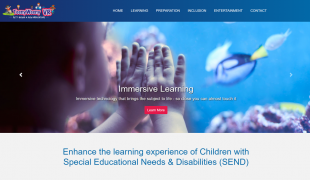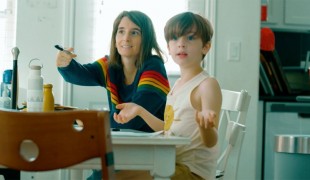- 5330
- 401
- 15
- 10
- 0
- Help Ukraine
Über die Lösung
Nico Iemma, ein 9-jähriges Kind mit Zerebralparese, konnte noch nie alleine einen Computer benutzen, da er seine Hände nicht zusammenbringen kann. "Ich musste jemanden bitten, für mich zu schreiben, was ein bisschen schwierig war", sagte Nico.
Trotzdem und aufgrund der Frustration, dass es keine Computer gibt, die sein Sohn benutzen könnte, beschloss Patrick Iemma, Nicos Vater, sich ans Geschäft zu machen und es selbst zu entwickeln.
Nico hat eine bessere Kontrolle in seiner rechten Hand, und das ist alles, was er braucht, um die von seinem Vater entwickelte Technologie zu verwenden, die Computersoftware, einen drahtlosen Detektor und eine Videospiel-Fernbedienung mit einem Joystick kombiniert, der die Maus steuert. „Ich habe einfach versucht, es einfach zu halten und habe mir die bereits vorhandene Technologie angesehen und überlegt, wie ich sie für Nico zum Laufen bringen könnte“, sagte Patrick Iemma, der einen Abschluss in Ingenieurwissenschaften hat.
Dank der Erfindung seines Vaters kann Nico zum ersten Mal in seinem Leben alles am Computer machen, auch spielen und zeichnen.
Nach monatelangen Tests hat die Schulbehörde von Durham diese Technologie in der Hoffnung übernommen, dass sie allen ihren körperlich behinderten Schülern hilft.
Geschichte angepasst von https://www.toronto.com/news-story/8611744-device-designed-by-durham-dad...
https://globalnews.ca/news/4216067/durham-school-board-adopts-accessible...
Diese Lösung enthält keinen Hinweis weder auf die Verwendung von Arzneimitteln, Chemikalien oder biologische Stoffe (einschließlich Lebensmitteln) noch auf invasive Geräte, anstößige, kommerzielle oder inhärent gefährliche Inhalte. Diese Lösung wurde nicht medizinisch validiert. Vorsicht! Wenn Sie irgendwelche Zweifel haben, wenden Sie sich bitte an einen Arzt.
DISCLAIMER: This story was written by someone who is not the author of the solution, therefore please be advised that, although it was written with the utmost respect for the innovation and the innovator, there can be some incorrect statements. If you find any errors please contact the patient Innovation team via info@patient-innovation.com
-
-
384
-
0
-
4466

Teeny Weeny VR – eine neue Art der Therapie für autistische Kinder.
CAREGIVING
COMMUNICATION: Communicating, whether by speaking, listening, or other means
Autism
AI algorithm
Anxiety
Difficulty concentrating or making decisions
Social withdrawal or isolation
Promoting self-management
Managing Neurological Disorders
Building Supportive Community Relationships
Promoting inclusivity and social integration
Improving Speech and Communication
To improve Treatment/Therapy
Preventing (Vaccination, Protection, Falls, Research/Mapping)
Raise awareness
Caregiving Support
Child and Adolescent Psychiatry
General and Family Medicine
Neurology
Pediatrics
Psychiatry
United Kingdom
-
-
-
258
-
0
-
2908

Mutter Eileen Lamb implementierte eine Reihe sprachassistentengesteuerter Strategien, um sie bei der Erziehung ihrer beiden autistischen Kinder zu unterstützen.
COMMUNICATION: Communicating, whether by speaking, listening, or other means
CAREGIVING
Social interaction
(SELF)-CARE: GROOMING: Personal grooming, such as combing hair or shaving
Autism
Strategy/Tip
AI algorithm
Promoting self-management
Managing Neurological Disorders
Promoting inclusivity and social integration
Improving Speech and Communication
To improve Treatment/Therapy
Preventing (Vaccination, Protection, Falls, Research/Mapping)
Caregiving Support
Child and Adolescent Psychiatry
General and Family Medicine
Neurology
Pediatrics
United States
-
-
-
369
-
0
-
3967

iCan – das Streben eines Vaters nach Unabhängigkeit seiner Tochter von ihrer Autismus-Diagnose.
CAREGIVING
Social interaction
Autism
App (Including when connected with wearable)
AI algorithm
Strategy/Tip
Restoring mobility
Promoting self-management
Promoting inclusivity and social integration
Improving Speech and Communication
Preventing (Vaccination, Protection, Falls, Research/Mapping)
Raise awareness
Caregiving Support
Child and Adolescent Psychiatry
General and Family Medicine
Neurology
Pediatrics
Psychiatry
Canada
-
 de
de